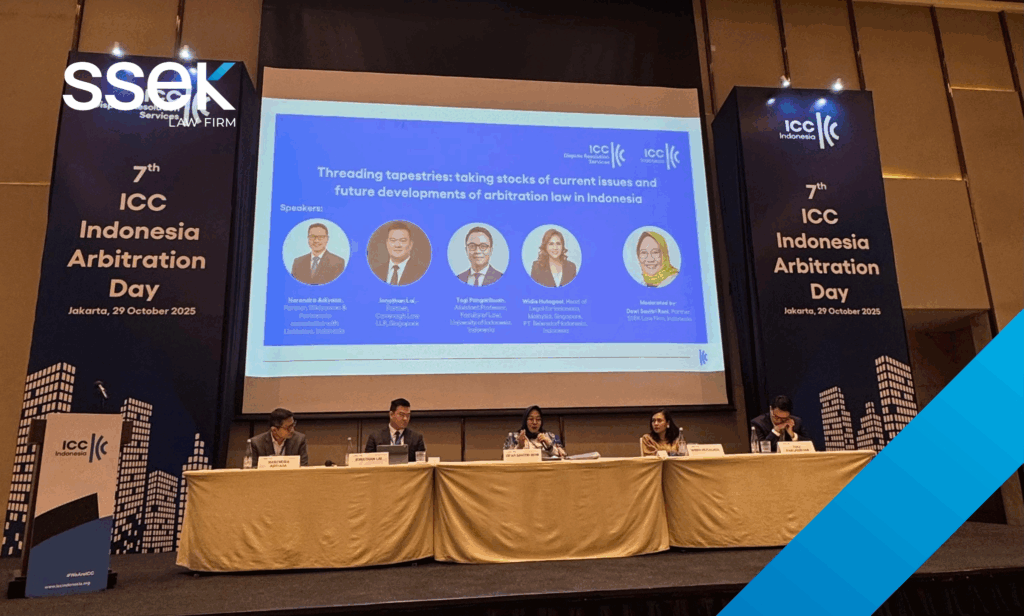AIAC officially unveiled their AIAC Suite of Rules 2026 during Asia ADR Week in October 2025.
The suite of rules is a comprehensive update to its institutional dispute-resolution framework, designed to be effective from 1 January 2026. This new suite spans multiple sets of rules covering arbitration, mediation, adjudication and domain-name disputes which represents a deliberate recalibration of the AIAC’s procedural architecture to align with global best practices, evolving market demands and Malaysia’s legislative context.
What the AIAC Suite of Rules 2026 Covers
The AIAC Suite of Rules 2026 comprises of:
This article will focus on the AIAC Arbitration Rules 2026.
AIAC Court of Arbitration
One of the key changes under the AIAC Arbitration Rules 2026 can be seen in the creation of the AIAC Court of Arbitration. This change marks a pivotal evolution in the administration of arbitration proceedings under AIAC where it defines clear roles for the President, the AIAC Court and the Registrar itself.
Comparison between AIAC Arbitration Rules 2026 and Rules 2023
The AIAC Arbitration Rules 2026 (‘2026 Rules’) introduce the formal establishment of the AIAC Court of Arbitration. The establishment of the AIAC Court of Arbitration is a foundational change from the AIAC Arbitration Rules 2023 (‘2023 Rules’), which did not have a separate arbitral court. This delineation of roles enhances procedural governance and elevate the arbitration framework to align with internationally recognised best practices.
In contrast, under 2023 Rules both administrative and procedural oversight functions were assigned the responsibilities mostly to the AIAC Directors. The 2026 Rules help to redress by centralising decision-making authority within the AIAC Court in order to strengthen the transparency and efficiency of the Court functions.
Establishment and Institutionalisation of the AIAC Court
Paragraph D, Guideline and Application of the 2026 Rules introduces, an explicit shift from the AIAC Director’s role to a formal AIAC Court of Arbitration:
‘… The reference to the Director in any previous editions of the AIAC Arbitration Rules shall refer to the President of the AIAC Court of Arbitration.’
This reflects the creation of a distinct institutional body called the AIAC Arbitration Court, which oversees arbitration administration, replacing the earlier concentration of functions in the Director’s office under the 2023 Rules (Rule 3 of AIAC Arbitration Rules 2023).
Delineation in Roles and Functions of the AIAC Court, President, and Registrar
The 2026 Rules define the President of the AIAC Court as the primary appointing authority for arbitrators, including during Emergency Arbitration and Fast Track cases (Rule 15 and Rule 21 of AIAC Arbitration Rules 2026). Meanwhile, the Registrar undertakes administrative functions including coordination, fee management, communication, and facilitation of procedural requirements
By contrast, the 2023 Rules centralise these functions in the Director without a separate arbitration court structure, which could be seen under Rule 3.1 of the 2023 Rules:
Rule 3.1
‘Where the Parties have agreed to arbitration under the AIAC Arbitration Rules, the Director shall be the appointing authority’.
Institutional Governance and Decision-Making Reforms
The 2026 Rules provide that:
Rule 55.1
‘… the Decisions of the President, the AIAC Court, the Registrar, and the AIAC, with respect to all matters relating to an arbitration shall be conclusive and binding …’
Rule 55.2
‘The President, the AIAC Court, the Registrar and the AIAC shall not be required to provide reasons for decisions made, unless required by an order of the court or where stated otherwise in the Rules.’
This approach help to strengthens the finality of institutional decisions, reducing the risk of procedural delays caused by prolonged challenges or reviews of administrative rulings. Such binding and transparent framework for institutional decisions is novel compared to the 2023 Rules, which granted more discretionary powers to the Director but without an explicit provision making all such decisions conclusively binding. Moreover, the 2023 Rules do not clarify the obligation to provide reasons for institutional decisions, leaving more ambiguity and potential for procedural disputes compare to 2026 Rules.
AIAC Court in the Global Landscape: A Comparative Glance
International Chamber of Commerce (ICC) International Court of Arbitration
Located in Paris, the International Court of Arbitration is the gold standard for global arbitration, administering more than 25,000 cases since 1923. Its structure includes a President, 17 Vice-Presidents Court members, and the secretariat, all performing specialised roles in the arbitral process.
Permanent Court of Arbitration (‘PCA’)
PCA is headquartered in the Hague. Its formation is on three-part structure which are the Administrative Council, Members of the Court (panel of arbitrators), and the International Bureau (Secretariat). PCA is an intergovernmental organisation handling disputes involving states, organisations, and private parties. The PCA’s rules and institutional setup influence the modern design of other arbitration courts, including the emphasis on neutrality and technical oversight.
London Court of International Arbitration (‘LCIA’)
The LCIA consists of three main organs namely the Court, the Secretariat, and the Company. The LCIA Court consisting of up to thirty five members, plus representatives of associated institutions, and former Presidents. The LCIA Court is the final authority for the application of the LCIA rules and its primarily function to appoint tribunals, determine challenges to arbitrators and controlling costs. Meanwhile, the Secretariat is responsible for the daily administration of all disputes referred to the LCIA.
Under its own regulations, the LCIA’s administrative services extend beyond arbitration and a variety of other ADR processes. In addition, it serves as an administrator rather than only an appointing body in cases governed by UNCITRAL regulations and offers a fundholding facility in other ad hoc procedures.
Conclusion
The AIAC Suite of Rules 2026 signifies a transformative enhancement of Malaysia’s arbitration landscape. By forming the AIAC Court of Arbitration and clearly specified the institutional roles, this change elevates the procedural governance which is well in line with leading international standards. These reforms helped to modernise AIAC’s dispute resolution framework, enhance transparency and reinforce Malaysia’s position as a global hub for alternative dispute resolution.
The AIAC Suite of Rules 2026 can be accessed here.
The AIAC Arbitration Rules 2026 can be accessed here.







